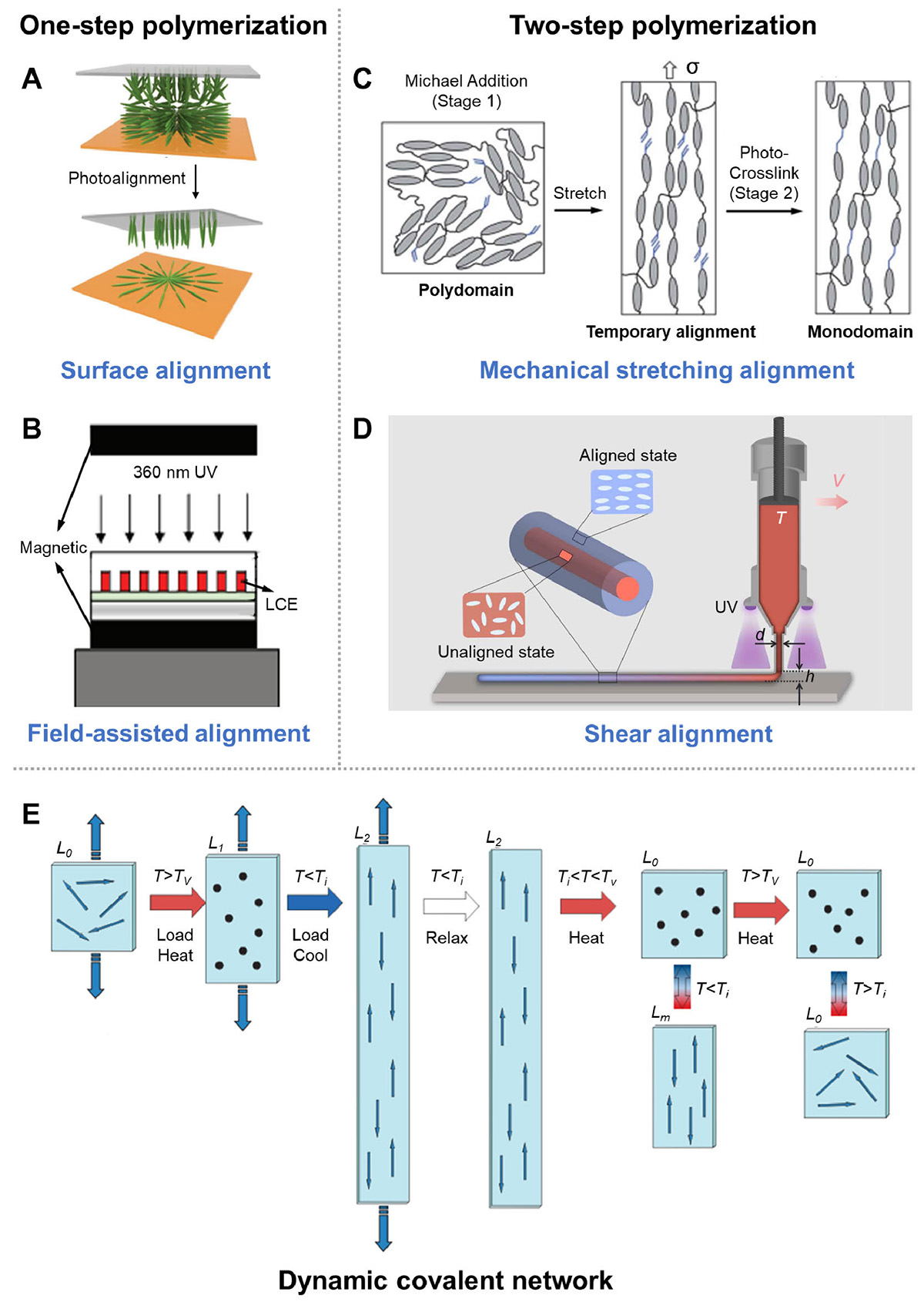Figure 3

Download original image
Synthesis and alignment of LCEs. (A) In the one-polymerization method with surface alignment technique, liquid crystal monomer mixture adopts a centrally symmetric splayed alignment directed by molecular orientation at the top and bottom surfaces. Reprinted with permission from Ref [33]. (B) The mesogens align along the longitudinal axis of the LCE pillars by the application of a magnetic field. Reprinted with permission from Ref [35]. (C) The process of a typical two-step polymerization method. The thiol-acrylate Michael addition and photopolymerization (TAMAP) reactions are used to synthesize monodomain LCEs. The polydomain LCE is prepared first and mechanically stretched to align the mesogens into a temporary monodomain. Then, the alignment is fixed through the second-step crosslinking process. Reprinted with permission from Ref [37]. (D) Schematic illustration of the DIW of LCE. The mesogens are aligned along the printing path by shear stress and then are fixed by post-curing. Reprinted with permission from Ref [48]. (E) The schematic illustration of preparing monodomain with dynamic covalent chemistry method. First, the polydomain LCE is uniaxial stretched under external forces and the exchange reaction of dynamic bonds is activated under external stimuli, leading to the rearrangement of the polymer network. As a result, the LCE is programmed into a monodomain state. Reprinted with permission from Ref [49].
Current usage metrics show cumulative count of Article Views (full-text article views including HTML views, PDF and ePub downloads, according to the available data) and Abstracts Views on Vision4Press platform.
Data correspond to usage on the plateform after 2015. The current usage metrics is available 48-96 hours after online publication and is updated daily on week days.
Initial download of the metrics may take a while.

